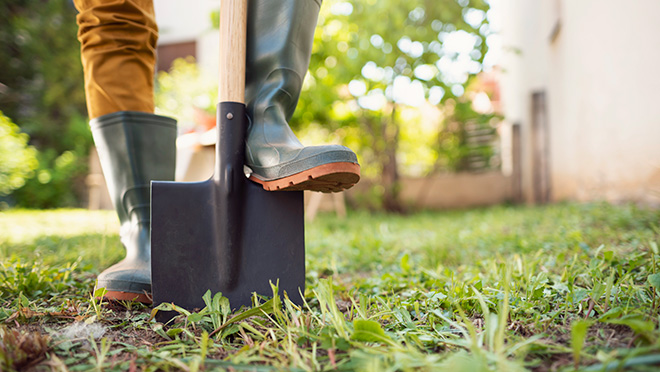Why Click or Call Before You Dig? Dirt Report tells the story

Analysis of digging incidents and near misses is a sobering read
Every once in awhile, there's a news story out there – sometimes with spectacular footage – that brings home the dangers of digs gone wrong and the importance of BC Click or Call Before You Dig.
Think back to July of 2007 and the images of crude oil spewing into the air – and eventually draining into Burrard Inlet – after a backhoe operated by a contractor accidentally ruptured the Trans Mountain pipeline in Burnaby.
Or look to just last November and the explosion and fire that resulted from a gas leak caused by a construction crew digging near a highway in the city of Concord northeast of San Francisco.
What you may not know is that the vast majority of digs gone wrong don't ever make the news, a lot never get reported, and that the number of incidents is staggering. Take a quick guess at how many incidents, Canada-wide, got reported voluntarily to the Canadian Common Ground Alliance (CCGA) in 2021.
One hundred? One thousand?
Not even close. According to the CCGA's Dirt Report [PDF], an annual statistical analysis of digs gone wrong in Canada, there were 11,573 incidents that caused damages to gas lines, communications lines and electrical lines reported in 2021. The good news is that reflects a 3% drop from 2019, and a 4% drop from 2018.
The bad news? That's still an average of 45 damages per workday in Canada.
Even if you're doing yard work, check before you dig
Canadians know to start an excavation by filing a project plan through their provincial Call or Click Before You Dig notification system. Take care to report your dig, even for backyard digs, to that system or to the local notification system in your city or municipality.
Even backyard digs can create dangers. More than one in 10 incidents (12%) reported across the country in 2021 were caused by occupants (including homeowners) and farmers.
Did you know? Getting a BC 1 Call locate request ticket is free, with no costs or charge for using the service.
Click or call BC 1 Call before you dig applies to outdoor improvement projects, big or small, such as:
- Installing posts for fences, mailboxes, realtor signs, welcome signs, etc.
- Building decks, retaining walls, patios, and installing fire pits
- Tree planting and digging a garden
- Anchoring playground equipment
- Installing in-driveway heating systems
In B.C., the vast majority of reported damages from digging in 2021 were to natural gas lines, a whopping 85% of all incidents. Another 10% were to telecommunications lines. Canada-wide, 7% of all reported incidents were to electrical lines.
Don't forget overhead power lines
A 2022 survey commissioned by BC Hydro found that nearly three quarters of British Columbians don't know the safe distance they should maintain between their equipment and the power line. And almost half were unaware that branches touching electrical lines can conduct electricity.
Here are the steps to take while working near power lines:
- Locate the line. Look around and locate the power lines before beginning any work outdoors. Trees can conduct electricity, which means branches that touch power lines can make the tree a safety hazard.
- Stay back. Always maintain a safe distance from power lines: stay back at least three metres. That is about the length of a standard four-door car.
- Be aware of the arc. Electricity can "arc" or jump from power lines across a gap to tools or ladders.